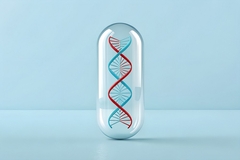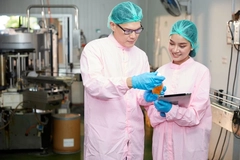Greater Demand for Dietary Fibres

With an increasing prevalence of breast cancer, the health benefits of food fibres are drawing greater media and consumer attention, prompting food manufacturers to place greater emphasis on the nutritional and fibre content of their products.
17/01/06 With obesity a major concern among the European population, food fibres are gaining in popularity in the battle to stay healthy, Frost & Sullivan have reported. While various scientific studies have advocated the role of fibres in controlling obesity and other diseases such as diabetes, a recent study carried out in Los Angeles demonstrated that women with a higher intake of dietary fibre have lower circulating oestrogen levels, a factor associated with lower risk of breast cancer. With an increasing prevalence of breast cancer, the health benefits of food fibres are drawing greater media and consumer attention, prompting food manufacturers to place greater emphasis on the nutritional and fibre content of their products.
"However, working within the framework of legislations on label claims represents a significant challenge for the European dietary fibres market," notes Frost & Sullivan Research Manager Kathy Brownlie. "The current European legislation restricts direct health claims on end-product labels and since food purchase decisions are often made at the shelf, a lack of product benefit description on the packaging could impact retail sales."
Also, companies in the European food fibres market are facing stiff competition from manufacturers in the far the East. Due of their lower labour cost, these companies are able to offer the same products at much cheaper prices, thereby posing a threat to European food fibre manufacturers. In response to this challenge, companies will have to look at reducing their operating costs by improving operational efficiency. Backward integration is one such strategy that will not only ensure a steady supply of raw materials, but also help companies reduce input costs and time.
With respect to the individual fibre markets, the overall growth rate for the insoluble fibres market is low. Larger participants in the insoluble fibres market are introducing new and novel products in a bid to retain market share. With market concentration expected to increase in the future, survival of smaller participants is expected to be difficult. The total revenues in the European insoluble fibres market stood at EUR138.9 million in 2004 and are likely to reach EUR 212.1 million in 2011.
In contrast, the increasing popularity of prebiotics has substantially benefited the soluble fibres market, Frost concluded. Prebiotics help in increasing the number of friendly bacteria in the body. In addition, Inulin possesses excellent water binding capacity (1:1.5), which allows its use in almost all moisture-containing products such as meatballs, cakes, bread and biscuits. "Faced with increasing competition from alternative ingredients, it is imperative that dietary fibre manufacturers use research and development (R&D) to identify new applications for their existing product lines as well as improve the performance of existing ones," says Ms. Brownlie.












